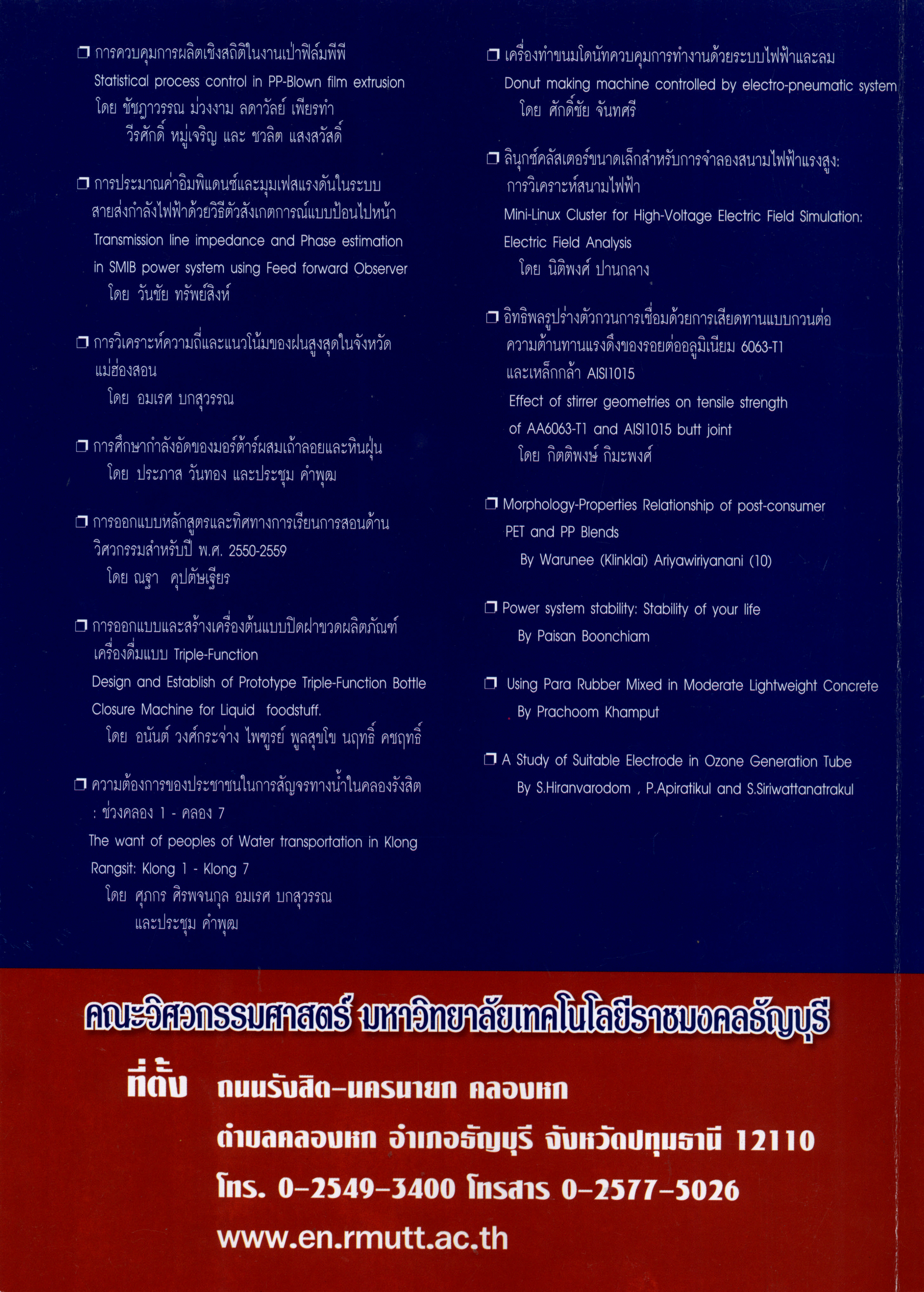Morphology- properties relationship of post-consumer pet and PP blends
Main Article Content
Abstract
Blending of recycled polyethylene terephthalate (RPET) with polypropylene (PP) was studied in the present work in attempts to obtain a new material with enhanced properties, respect to the starting materials. The success of the project depends mainly on the possibility to make products from RPETIPP blend. Therefore, fundamental information in terms of blend composition, compatibilization, molecular weight and processing condition effect on the phase morphology, physical, thermal, and mechanical properties of RPET/ PP blends is very important to reveal before product design. This was approached by blending of RPET with PP (RPETIPP) using a single-screw extrusion process in the presence of various amounts of compatibilizer ranging from 0-35 wt% based on the PP content. From the morphological analysis, it is observed that the size of dispersed PP phase in RPET/ PP blend was dependent upon PP content and amount of compatibilizer that is it increases as PP content increased. The addition of compatibilizer of up to 15 wt% resulted in a size reduction of the dispersed phase (from 1.8/(mu)m to <0.43 (mu)m) and particle size distribution becomes narrower. The changes in morphological structure significantly affect the tensile and impact resistance of the moldings. An elongation at break (EB) of more than 350% could be achieved with the incorporation of just 5 wt% of compatibilizer (as compared to <90% EB for un-compatibilized specimens) while significantly better impact performance was observed in all compatibilized specimens.
Article Details
The manuscript, information, content, picture and so forth which were published on Frontiers in engineering innovation research has been a copyright of this journal only. There is not allow anyone or any organize to duplicate all content or some document for unethical publication.
References
S. Birch, J. Yamaguchi, A. Demmler, K.Jost, Automot. Eng, 101(1993), 109.
Wellman International, Mat. Reklam, Week,163(1994), 6.
New methods of using post-consumer PE'T in food contact containers, Reuse Recycle, 24(1994),57.
D. Pringle, Packag. Week, 10(1994), 9.
Society of the plastics Industry, Polyurethane News,3(1990), 3.
F. Awaja, D. Pavel, Review of recycling of PET,Eur. Polym. J,, 41(2005), 1453-1477.
C. Creton, H.R. Brown, V.R. Deline, Influence of chain entanglement on the failure modes in block
copolymer toughened interfaces, Macromolecule,27(1994), 1774.
M. Matos, B. D. Farvis, P. Lomellini, Interfacial modication of polymer blend-the emulsification
curve: Part I, Polymer, 36(1995), 3899.
J. M. Huang, P. P. Chu, F. C. Chang, Conformational changes and molecular motion of PET annealed above glass transition temperature, Polymer, 41(2000),1741-1748.
Y. Cao, H. Li, Influence of ultrasound on the processing and structure of PP during extrusion, Polym. Eng Sci.,42(2002), 1534-1540.
S. George, N.R. Neelakantan, K.T. Varughese, S.Thomas, Dynamic mechanical properties of isotacticPP/nitrile rubber blends: effects of blend ratio, reactive compatibilization, and dynamic vulcanization, J.Polym. Sci, Part B, Polym. Phys,, 35(1997), 2309.
J. M. Willis, B. D. Favis, Reactive processing of polystyrene-co-maleic anhydride/elastomer blends: processing-morphology-property relationship.Polym. Eng. Sci., 30(1990), 1073.


